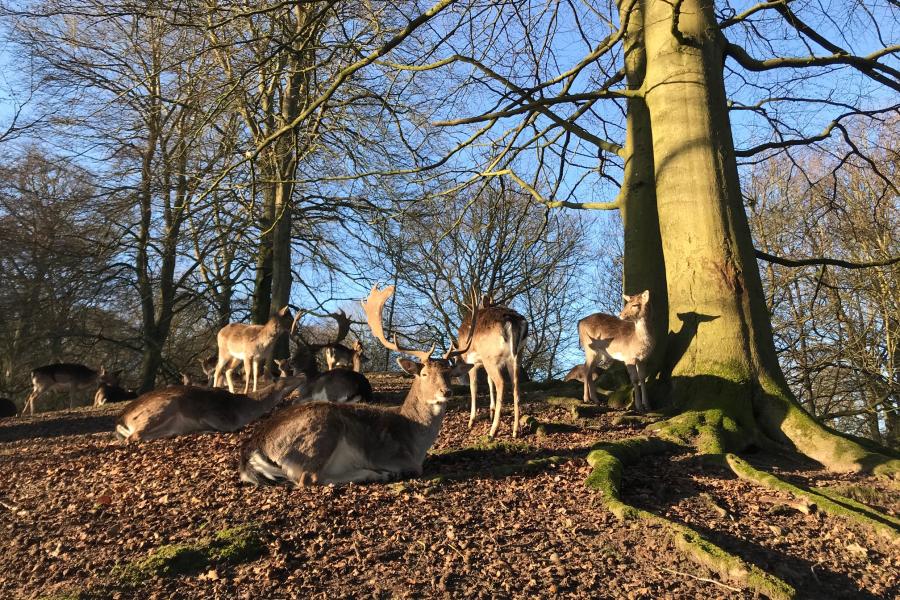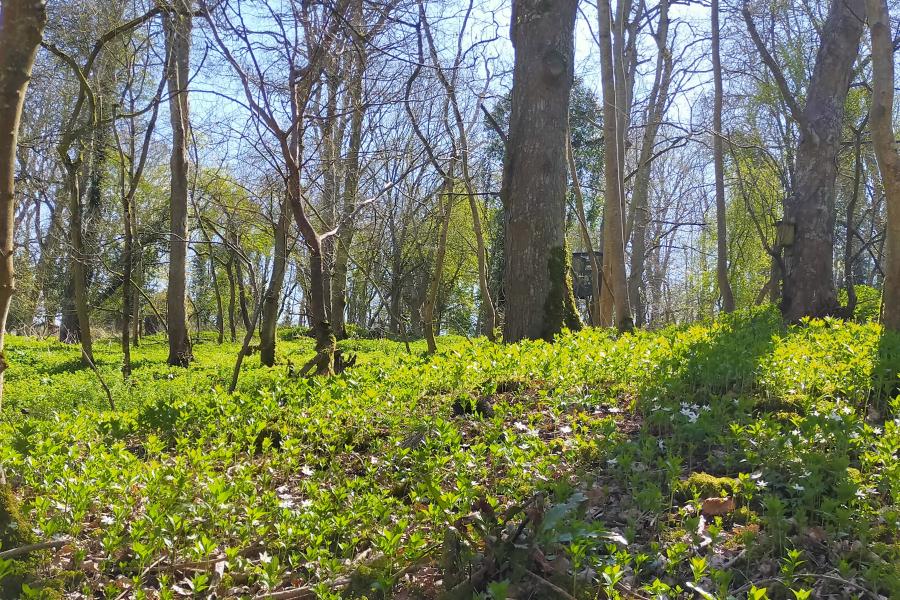Forestry and conservation experts at Bangor University are collaborating on two of six newly announced UK Research and Innovation research projects totalling £3 million. These projects aim to improve our understanding of the composition of treescapes across the UK, their value to people and the contribution they can play in addressing climate change and biodiversity loss.
Bangor University’s participation in so many of the research projects reflects the institution’s prowess in the field of forestry and conservation research, and the University’s 100-year legacy in this field.
The two-year research projects support the Government’s ambition to increase the size and number of woodlands across the country.
The first of these projects will investigate resilience across the country’s woodlands, while the second will help land managers to reduce damage caused by deer.
Woods and forests account for approximately 13% of the UK’s land surface, but the UK government’s ambition is to increase this to 17% as part of UK’s plans to reach net zero emissions by 2050.
Woodlands, new or old, must have the diversity and resilience to cope with the threats presented by climate change, pests and tree diseases.
The DiversiTree project will provide woodland managers with the knowledge and tools required to make our woods and forests more resilient.
Under DiversiTree, researchers from Bangor University’s Sir William Roberts Centre will investigate strategies for diversification of woodlands in Britain. Forest managers are at the forefront of efforts to future-proof Britain’s trees, woods and forests against the impacts of climate change and pests and diseases. Dr Norman Dandy and Seumas Bates will be analysing manager’s existing understandings of, and ambitions for, woodland diversity through case study research in England and Scotland. This will provide the basis on which future policy and support can be founded as government reforms environmental policy post EU-exit.
Dr Norman Dandy, said,
“DiversiTree’s research will enable us to understand how they see these threats and their forest’s capacity to cope with them, which in turn will inform efforts to support their management responses.”
iDeer



iDeer
Working in partnership with land managers in the Elwy Forest in North Wales, the iDeer project will co-develop a tool to help landowners and woodland managers design tree planting schemes that are resilient to the potential negative impacts of deer.
Deer populations have increased rapidly in recent decades and the UK is home to six different species. These charismatic animals can impact woodland growth and establishment by stripping bark and eating young trees, saplings, and seedlings. This damage presents a serious challenge to the government’s target to increase woodland by a third and achieve its net zero target by 2050.
Dr Graeme Shannon said,
“Deer play a critical role in the functioning of healthy woodlands but extensive land transformation and rapid deer population increases have resulted in conflict between deer and human-land use objectives. iDeer will allow us to provide specific guidance to landowners and woodland managers when it comes to the sustainable management of deer populations across England and Wales”
Dr Freya St John said,
“We are really excited by this opportunity to work with landowners and managers, initially in the Elwy Valley, to co-develop the iDeer decision-support tool that will have land manager’s knowledge on deer and woodland management practices at it’s core”.
In their own unique way, each of these projects will draw on expertise of Bangor University staff to inform decision-making on the expansion of future treescapes for the benefits of the environment and society. These decisions could include, for example, where to locate new woodland, what tree species to plant, and where to place fencing.1
An earlier funding round under the UKRI Treescapes Programme saw Bangor contributing to the MEMBRA project (Understanding Memory of UK Treescapes for Better Resilience and Adaptation ) which will explore whether and how trees remember past stress conditions and transfer these memories to descendants through epigenetics-based DNA modifications.





